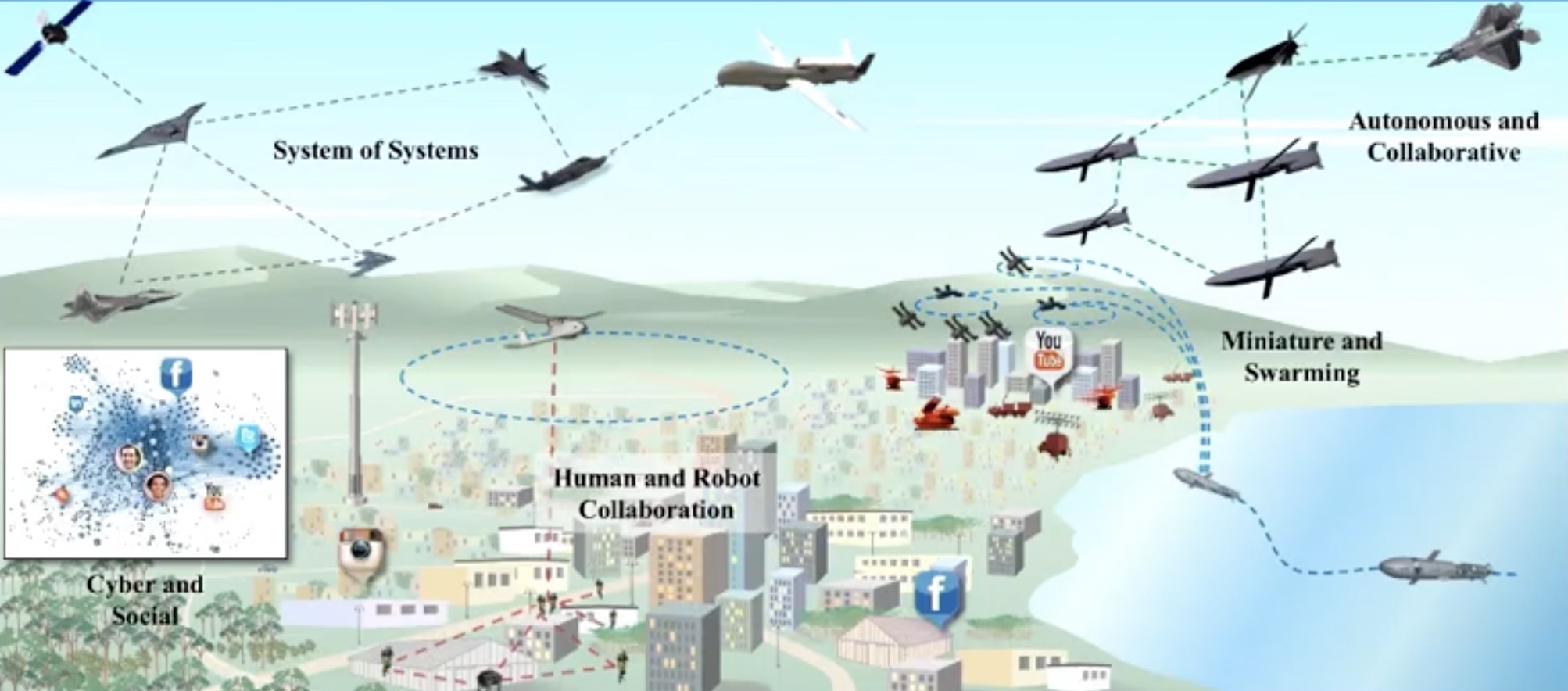Advancing microelectronics and systems for the security of the future
As an ECE Distinguished Lecturer, Dr. Jeremy Muldavin (BSE EP; MSE PhD EE) spoke about a DoD initiative to improve the competitiveness of the U.S. in microelectronics.

 Enlarge
Enlarge
Dr. Jeremy Muldavin (BSE Engineering Physics; MSE PhD EE) returned to campus as an ECE Distinguished Lecturer to speak about the Department of Defense’s Microelectronics Innovation for National Security & Economic Competitiveness (MINSEC) initiative and related advanced secured electronics foundry challenges.
Specifically, Muldavin spoke about how the future of cyber and social networks will impact safety and security. For instances, future special forces teams may be assisted by entire fleets of robots that are designed to map the area, identify threats, and report that information in real time to the team. There are many barriers to why this level of communication is limited today, including systems that are easily jammed or low speeds of connectivity. These challenges arise with domestic issues as well.
“[We don’t want] traffic jams and auto accidents just because someone sets up a jammer by the side of the road and/or does other interference,” Muldavin says. “Or even worse, at a big sporting event or venue, someone can come up and plant a dirty bomb or do something else and jam their frequencies and jam first responders from being able to attend.”

 Enlarge
Enlarge
Solving these issues involves cyber-physical innovation – areas where Muldavin emphasizes that the U.S. is falling behind.
“In terms of what’s happening now, the U.S. has some pretty strong capabilities. We have Apple and Qualcomm. These fabless semiconductor industries are pretty good,” Muldavin says. “But our hardware start-ups are really falling behind our foreigners.”
To reassert the U.S.’ impact in this field, MINSEC was developed to provide assured access and enhancement to U.S.-based design, foundries, and packaging ecosystem to generate and protect intellectual property and U.S. competitiveness. It invests in disruptive R&D to develop materials, devices, architectures, and design tools for complex next-generation computing, strategic applications, and enhanced fabrication.
“In order to have a good future economically, our self-driving cars [and] a lot of other systems, really depend on our ability to have advanced microelectronics and systems in them, and I think the U.S. needs to have that opportunity,” Muldavin says.
Muldavin is a member of the Office of the Deputy Assistant Secretary of Defense for Systems Engineering and Senior Staff member of MIT Lincoln Laboratory. Since graduating from Michigan with his PhD in electrical engineering, he has worked at MIT Lincoln Laboratory researching advanced microelectronics, semiconductor fabrication, embedded systems, and open and distributed architectures. He received the 2011 MTT-S Outstanding Young Engineer Award “For outstanding early career contributions to the microwave profession.”
You can watch Muldavin’s entire lecture on our youtube channel.
 MENU
MENU 
